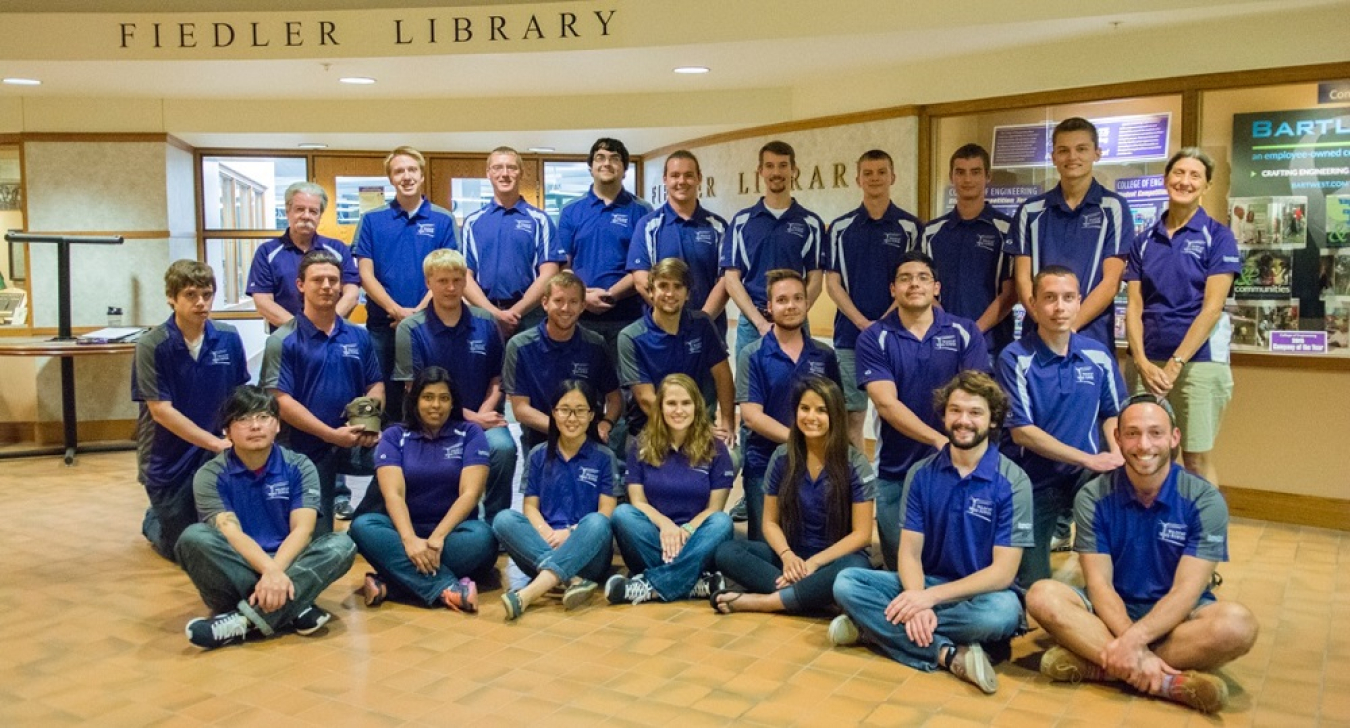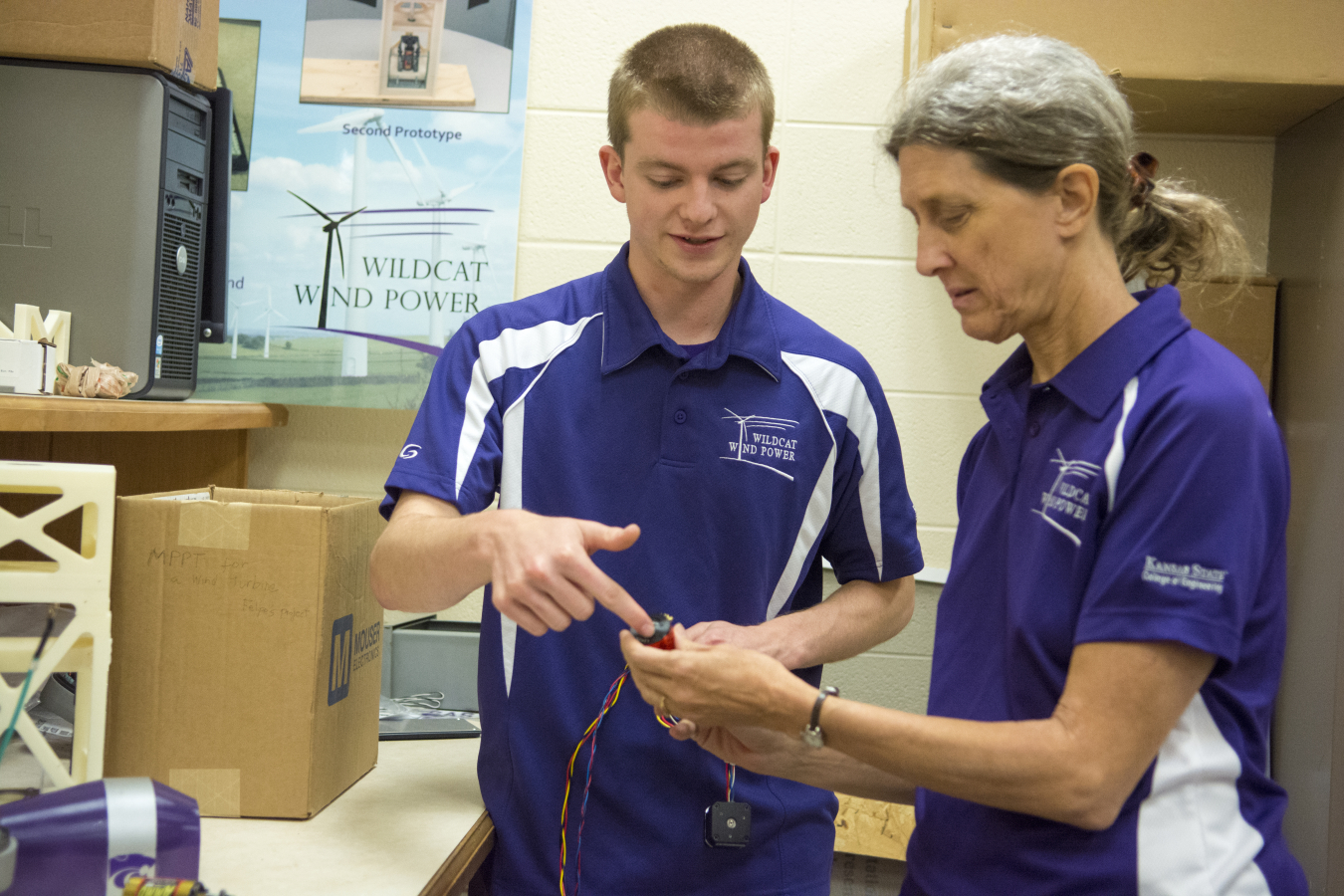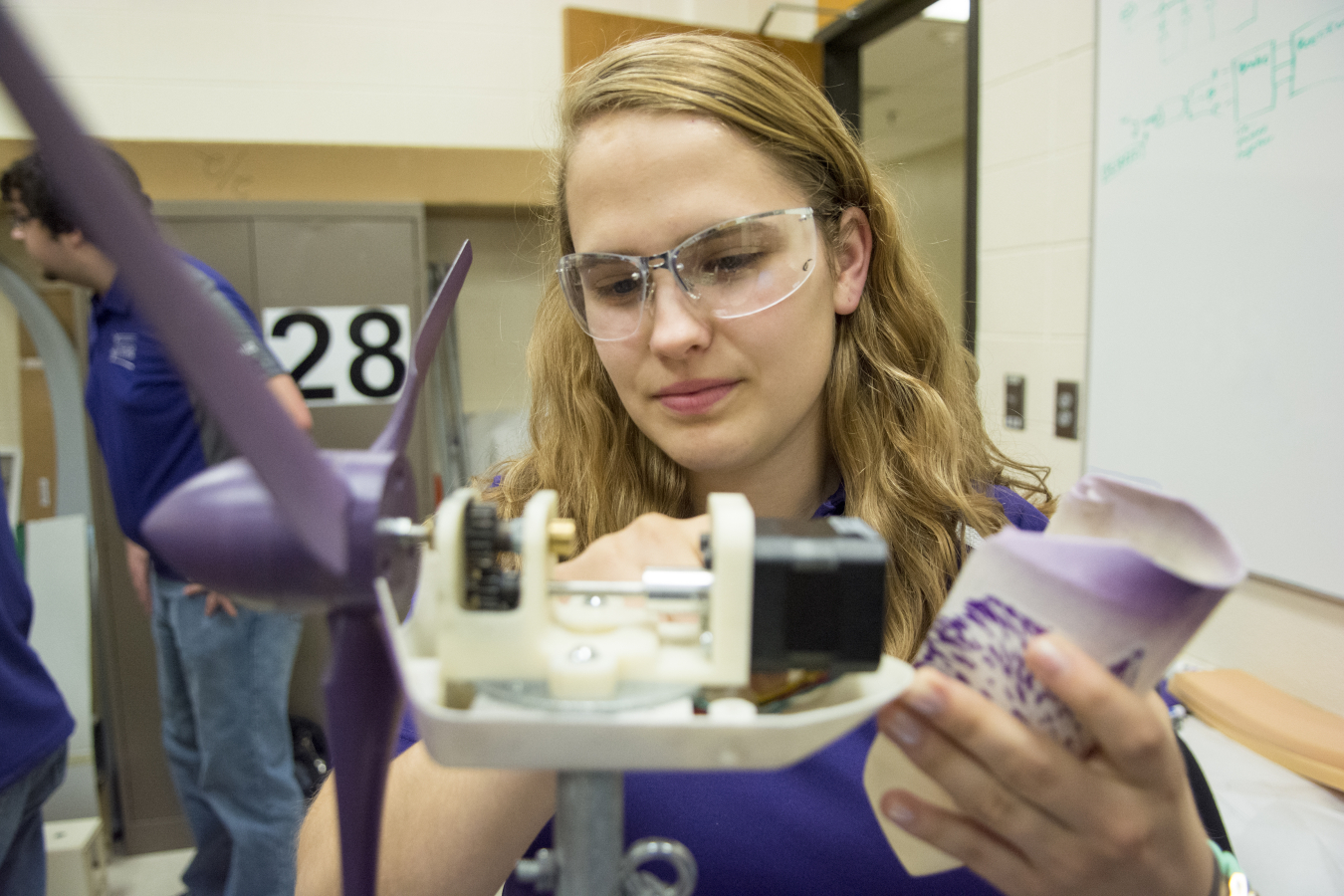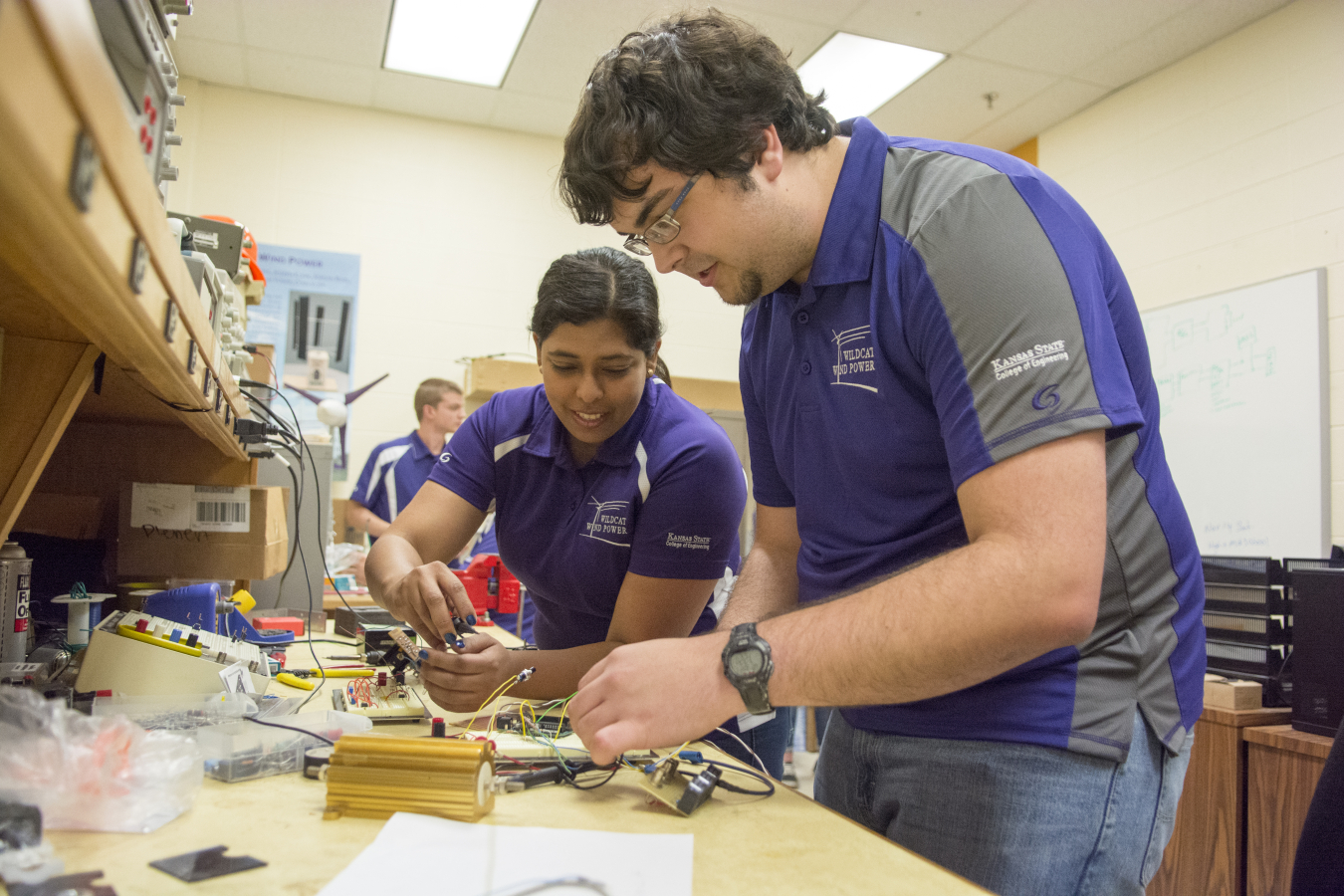
Team roster: Tanzila Ahmed, Electrical Engineering; Lawryn Edmonds, Electrical Engineering; Jacob Meyer, Electrical Engineering; Michael Banowetz, Electrical Engineering; David Plenert, Electrical Engineering; Timothy Sample, Electrical Engineering; Stephen Debes, Electrical Engineering; Connor Krause, Electrical Engineering; Andrew Johnson, Electrical Engineering; Sshangxian Wang, Electrical Engineering; Mark Ronning, Electrical Engineering; Armando Marquez, Electrical Engineering; Alex Thibault, Electrical Engineering; Broden Bowell, Electrical Engineering; Lee Evans, Mechanical Engineering; Justin Currence, Mechanical Engineering; Aaron Akin, Mechanical Engineering; Justin Mann, Mechanical Engineering; Ben Schmanke, Mechanical Engineering; Grant Ferland, Mechanical Engineering; Alex Ackley, Mechanical Engineering; Jared Baker, Mechanical Engineering; Tyler Schmitz, Mechanical Engineering; Fang Wan, Mechanical Engineering, Mechanical Engineering; Matt Weisbrod, Mechanical Engineering

Michael Banowetz informs Ruth Douglas Miller, faculty advisor, of the team's generator selection.

Lawryn Edmonds investigates KSU's 2015 competition wind turbine.

Connor Krause, and Tanzila Ahmed begin to test the electrical circuit.
TEAM NAME:
WHY WIND?
For this team, members hope to apply classroom knowledge to actual design work. They have an opportunity to work with individuals outside their disciplines and bring perspectives together on a project. These are invaluable opportunities to have before entering the professional workplace. An outcome from this experience is that team members will improve practical skills such as circuit design and layout, soldering, and exposure to design software.
Project Description:
Wildcat Wind Power is designing a five-blade, horizontal axis wind turbine to compete with at the Collegiate Wind Competition 2016. They are optimizing the turbine to fit two main criteria: low cut-in wind speed and a high coefficient of power at high wind speeds. With these in mind, they hope to introduce innovative design elements to yield a turbine that will perform well in all of the aspects of the testing contest.
Game Plan:
The team will be 3-D printing many parts of their turbine using an in-house 3-D printer. They will also have the opportunity to test the turbine in a wind tunnel—which is currently under construction—that was designed by the team for the purpose of this competition. Having both these resources close by will allow Wildcat Wind Power to produce a highly efficient turbine to take to competition.
Team Strength:
The team’s greatest strength is its variety of backgrounds and skill sets. The team is comprised of eight mechanical engineering students, 12 electrical engineering students, and three students in the College of Business. Of these students, nine are returning members. Wildcat Wind Power consists mostly of junior- and senior-level students, but also has multiple underclassmen, as well as guidance from a returning graduate student. With the collaboration between these different group members, they hope to create a competitive turbine that performs exceptionally well at the Collegiate Wind Competition 2016.
TEAM HURDLES:
One of Wildcat Wind Power’s largest challenges is a total redesign of many of the turbine components used by the Kansas State University Collegiate Wind Competition 2015 team. Also, as a volunteer group, the team needs to balance the schedules of several groups so they can come together to complete the final design. Another challenge for the team has been losing its access to a local wind tunnel, which has forced them to dedicate time to finding replacement solutions.
TEAM TAKEAWAY:
One of the most important things teams can take away from the Collegiate Wind Competition 2016 is the interdisciplinary experience they gain from completing a project from start to finish with other engineers. Teams also gain invaluable hands-on design experience and insight to the organization of projects in professional careers. Through networking with professionals in the industry, team members can form connections that will be beneficial to their professional careers.

